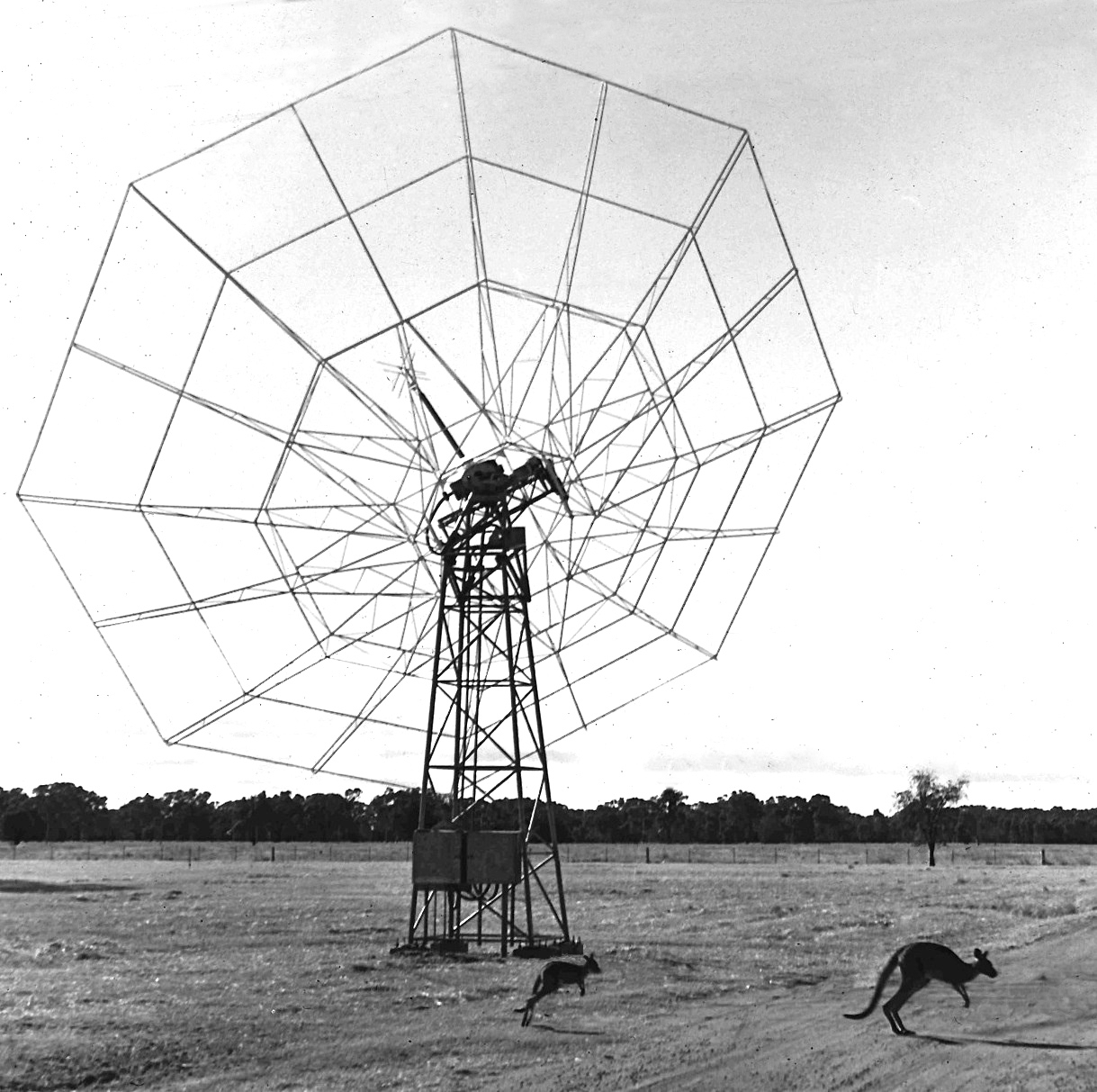| 13th of August 2018 |
|---|

|
| Studies of the Sun |
|
With the launch of the Parker Solar Probe over the weekend,
today's ADAP looks back at
the history of solar research within CSIRO.. Beginning in 1944,
Ruby Payne-Scott and Joe Pawsey carried out solar radio
observations from the Sydney University grounds and at Dover Heights.
In 1949, from a makeshift observatory at Penrith, Paul Wild used the
world’s first radio-spectrograph to classify and interpret the
different types of solar radio bursts: work which was continued at the
Dapto station between 1952 to 1963.
One of Pawsey’s final achievements with CSIRO was to persuade the Ford Foundation of America to grant the US$630,000 needed to build the Culgoora radio-heliograph, which was able to record radio images of the sun every second during the day. The radio-heliograph, which operated from 1967 to 1984, consisted of 96 antennas, one of which is pictured above, arranged at 100m intervals around a 3-km diameter circle, making significant contributions to solar research over its lifetime. (Picture credit: John Paul Wild [CC BY-SA 3.0 ], via Wikimedia Commons) |